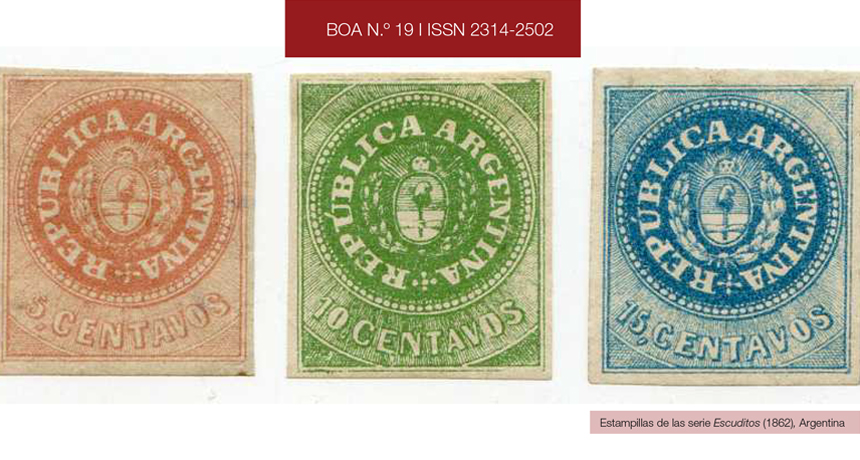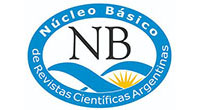At the End of the Hallway
Modalities of the Uncanny in Video Games
DOI:
https://doi.org/10.24215/23142502e015Keywords:
Uncanny, videogame, art, fantastic, art gameAbstract
At present, the growth of independent production and the appropriation of operations coming from artistic languages allow the video game to experiment with new ludic forms. Within the walking simulator scene, more and more games update the category of the uncanny. In the cases analyzed, the starting point is a common motif: that of the house, to investigate different forms of rarification of the space, the story, the themes and the enunciation. The treatment of these dimensions introduces an uncertainty between the very existence of threats and dangers that emerge from something known and familiar, and whose nature oscillates between the real and the imaginary.Downloads
References
Bejarano, C. (2011). La visualidad siniestra. Revista Figuraciones (8). Recuperado de http://www.revistafiguraciones.com.ar/numeroactual/articulo.php%3Fida%3D176%26idn%-3D8%26arch%3D1
Brown, A. y Marklund, B. (mayo de 2015). Animal Crossing: New Leaf and the Diversity of Horror in Video Games. Ponencia presentada en DiGRA 2015 Conference: Diversity of Play: Games - Cultures - Identities. Leuphana University of Lüneburg, Luneburgo, Alemania. Recuperado de http://www.digra.org/digital-library/publications/animal-crossing-new-leaf-and-the-diversity-of-horror-in-video-games
Crawford, E. (julio de 2017). Glitch Horror: BEN Drowned and the Fallibility of Technology in Game Fan Fiction. Ponencia presentada en DiGRA 2017. Digital Games Research Association, Melbourne, Australia. Recuperado de http://www.digra.org/digital-library/publications/glitch-horror-ben-drowned-and-the-fallibility-of-technology-in-game-fan-fiction/
Cross, K. (14 de agosto de 2015). How «walking simulators» allow us to touch other worlds. Gamasutra [Entrada de blog]. Recuperado de https://www.gamasutra.com/view/news/251191/How_walking_simulators_allow_us_to_touch_other_worlds.php
Donovan, T. (2010). Replay. The history of video games. Lewes, Gran Bretaña: Yellow Ant.
Freud, S. (1992). Obras completas de Sigmund Freud. Volumen XVII (1917-1919). Ciudad Autónoma de Buenos Aires, Argentina: Amorrortu.
Grimshaw, M. y Tinwell, A. (abril de 2009). Survival horror games. An uncanny modality. Ponencia presentada en Thinking After Dark International Conference. Universidad de Bolton, Bolton, Gran Bretaña. Recuperado de http://ubir.bolton.ac.uk/235/1/gcct_conferencepr-11.pdf
Kirkland, E. (septiembre 2009). Horror Videogames and the Uncanny. Ponencia presentada en DiGRA 2009. Breaking New Ground: Innovation in Games, Play, Practice and Theory. Universidad Brunel, Londres, Gran Bretaña. Recuperado de http://www.digra.org/digital-library/publications/horror-videogames-and-the-uncanny
Masschelein, A. (2011). The Unconcept: The Freudian Uncanny in Late-Twentieth-Century Theory [El no-concepto: el siniestro freudiano en el siglo XX tardío].Nueva York, Estados Unidos: Suny Press.
Maté, D. (2017). Transformaciones de la figura del detective en el videojuego: tres casos recientes. Cuadernos del Instituto de Investigación y Experimentación en Arte y Crítica, (1), 47-63. Recuperado de https://assets.una.edu.ar/files/file/critica-de-arte/2017/2017-cauna-cuaderno-iieac-nro-01.pdf
Maté, D. (2019). Juego, arte: tensiones en los pasajes del videojuego al museo. La trama de la comunicación, 23(1), 107-121. Recuperado de https://rephip.unr.edu.ar/bitstream/handle/2133/14565/Mat%C3%A9.pdf?sequence=3
Ravetto-Biagioli, K. (2016). The digital uncanny and ghosts effects. Screen, 57(1), 1-20.
Sloan, R. J. S. (2014). Videogames as remediated memories: Commodified nostalgia and hiperreality in Far Cry: Blood Dragon and Gone Home. Games and Culture, 10(6), 225-550.
Todorov, T. (1992). Tipología de la novela policial. En D. Link (Comp.), El juego de los cautos (pp. 35-39). Ciudad Autónoma de Buenos Aires, Argentina: La Marca.
Todorov, T. (2011). Introducción a la literatura fantástica. Ciudad Autónoma de Buenos Aires, Argentina: Paidós.
Vidler, A. (1992). The Architectural Uncanny [Lo siniestro arquitectónico]. Cambridge, Inglaterra: MIT Press.
Downloads
Published
How to Cite
Issue
Section
License
According to these terms, the material can be copied and redistributed by any means or in any format as long as a) the author and original source of the publication are quoted (magazine and URL of the work), access to the license is provided and whether changes have been made is mentioned; and b) the material is not used for commercial purposes.
The cession of non-exclusive rights means that after the publication (post print) in Boletín de Arte the authors can publish their work in any language, means and format; in such cases it must be mentioned that the material was originally published in this magazine.
Such cession also means the authorization of the authors for the work to be collected by SEDICI, the institutional archive of the National University of La Plata, and to be spread in the databases that the editorial team considers appropriate to increase the visibility of the publication and its authors.
Moreover, the magazine encourages the authors to deposit their productions in other institutional and thematic archives under the principle that offering the society the scientific and academic production without any restrictions contributes to a greater exchange of the global knowledge.
































